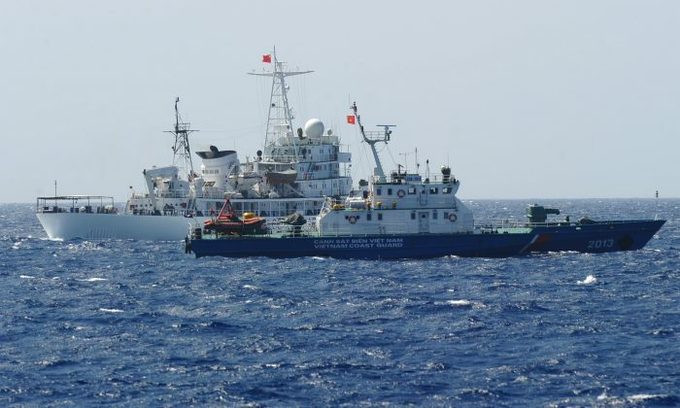This article is written by Anushka Yadav from the Faculty of Law, Aligarh Muslim University. This is an exhaustive article on the international laws on Sea-bed and the Ocean floor. It explores the idea of the “common heritage of mankind”.
Table of Contents
Introduction
The sea-bed and the ocean floor is an area that is prone to be destroyed for the benefits it has. Many minerals and resources are available under the sea and the oceans. These resources can be used for the development of mankind. But at the cost of human greed, the beauty and benefit of this area cannot be destroyed. It is a serious international issue.
There are many issues regarding the legal status of the sea and the oceans. Who can access these seas and the oceans? What are the responsibilities of humans regarding the seas and the oceans? These questions have been focused on in the article. The articles look into the international laws that have been set up for the management of this area.
Need for laws
The major step of determining various issues of the sea and the oceans are addressed by the United Nations Convention on Law of the Sea (UNCLOS). The vast advantage or benefit that the sea and the ocean have is the reason for raising issues because everybody wants to claim the right over the advantageous area of the seas and oceans. The issues of control of sovereignty over the seas and the oceans are the major rising issues of such cases. The need for legal clarity in this area was felt by the United Nations and the United Nations Sea Convention was held to answer many unclear questions.
UN Convention on the Laws of the Sea (UNCLOS)
The United Nations Law of the Sea Convention was held in New York on 10th December, 1982. It was entered into force in June 1994. There are 168 States that are members of this convention. The Convention set out the laws related to the areas of sea and oceans. It declares that the area of the seas and the oceans are beyond the sovereignty of any particular Nation. The area belongs to the whole of mankind. It promotes peaceful uses of the seas and the oceans and also promotes the benefit of the whole of mankind by its use.
Legal status
The legal status of sea-bed and the oceans is clearly defined in the United Nations Law of the Sea Convention (UNCLOS). Article 137 of the Convention provides the legal status to such an area. The Article specifically prevents any state to exercise sovereignty in any such area. The States do not have any claim, acquisition, or right on such an area and the resources of such an area.
By virtue of this article, the sea-bed and the oceans are excluded from the control of any nation and make it reliable for the principle of common heritage to mankind as a whole. The resources of such an area are not the rights of any particular area but the whole world as a whole.
Principle governing the area
The area of high seas is an area that does not come under any nation’s jurisdiction. The sea-bed and the ocean floors in such areas are governed by the principle of the “common heritage of mankind”. The area does not belong to any particular nation but to common mankind as a whole. This is based on the benefit to the whole of mankind and not to any particular groups or individuals or nations.
This principle of governing the areas of the sea-bed and the oceans is specifically laid down under the United Nations Laws of the Sea Convention, 1982. Article 136 of the Convention provides the principle of the common heritage of mankind. Clause (2) of Article 137 of the Convention also provides that the authority shall act in the direction of the common heritage of mankind as a whole.
Marine scientific research
- Marine scientific research is promoted by the UNCLOS. Article 143 of the UNCLOS provides for the standards to be adopted for this scientific research.
- The objective of such scientific research shall be the benefit of the whole of mankind. And it shall be done for peaceful purposes. Part XIII of the Convention provides the principle that this area shall be used for the benefit of the whole of mankind and also that it shall be used for peaceful purposes.
- It provides for the provisions of the promotion of marine scientific research by the Authority (International Seabed Authority) and the member States.
- It provides for the arrangement of international programs for this research and the promotion of such research by the participation of member states. It also provides that the authority shall promote the programs for the benefit of the developing states and technologically less developed States.
- The result of such research is to be analyzed by the authority (ISA) or other international channels if needed.
Preservation of Marine Environment
- The provisions related to the protection of the marine environment are provided in Article 145 of the Convention.
- It provides that the activities that are done in this area shall be done by keeping in mind the effective protection of the marine environment. The measures shall be taken for the protection of it from the harmful effects of such activities.
- Prevention, reduction, and control of pollution are the main ideas of protecting the ecological system of marine.
- The marine environment here includes coastline.
- Flora and fauna shall be protected. And the resources available in this environment shall be protected and preserved.
Mining activities
- There are many minerals that are deposited in the sea deep inside. Such minerals can be retrieved from the surface of the sea and used for the whole of mankind. Deep-sea mining could be done in the area of the sea and the ocean below 200 m.
- The major issue with deep-sea mining is the exploitation of the marine environment. The mining activities and use of machines can destroy the living habitant inside the sea. And not only the living habitant but also the sediment of the sea is affected by such activities.
- Such mining activities also lead to the pollution which may destroy the sea environment. Deep-sea mining causes noise pollution inside the sea. Light pollution is also caused by mining equipment. The water pollution is caused by the leaking toxic wastes from these activities. This automatically affects the ecosystem of the sea.
- This exploration and exploitation of the area of the sea bed and the ocean floor is under the authority of the International Seabed Authority (ISA) by virtue of the UNCLOS.
- The International Seabed Authority has the function to create contracts for the exploration of the area by the member States. In case of exploitation of the sea environment during these exploring activities, the ISA plays its role in the preservation of the environmental protection provisions in the UNCLOS.
- India is also a participant in deep-sea mining. The objective is to extract polymetallic nodules or manganese nodules. The ISA has provided the license for 15 years for the mining activities to India in 2002. It was again extended for 5 years by the authority (ISA) in 2017.
- Article 153 of the Convention provides for the authority of the International Seabed Authority for providing permissions for the exploration activities. It provides a system of exploration and exploitation activities.
- It provides that the permission of such activities shall be in the form of a formal plan of work. Such a plan of work is to be approved by the Council of the ISA and reviewed by the Legal and Technical Commission of the ISA. When the authority (ISA) approves it then it takes the form of a contract according to Article 3 of the Convention.
- The authority (ISA) has control over such activities in the area. The measures of control of pollution and preservation of sea environments are also provided by the authority in the contract of exploration. The authority has the right to take the required action to fulfil the measures provided in the contract.
UN Seabed Committee
The International Seabed Authority (ISA) is established by the UNCLOS for implementing the provisions in Part XI of the UNCLOS. Part XI of the UNCLOS deals with the sea-bed and the oceans excluded from the specific sovereignty of any particular Nation. It is an intergovernmental authority having statutory power to implement the UNCLOS among the Nations. It is headquartered in Jamaica and Kingston. The UNCLOS expressly and comprehensively provides the provisions related to the working and authority of the ISA.
Establishment
The International Seabed Authority (ISA) is established by virtue of Section 156(1) of the UNCLOS. It was established on 16th November, 1994 when the UNCLOS entered into force. However, it started to work as a fully functional organization in June 1996. Article 156(2) of the Convention also provides that the States which are parties to the UNCLOS are also the members of the Authority. The Authority has jurisdiction over the member States. There are 168 member States of the ISA at present.
Functions
- The main function of the ISA is to implement the provisions of Part XI of the UNCLOS. It has to allow and manage the extracting mineral-resource related activities form the seabed of the member States of the Committee. The objective of its establishment is to provide the benefit of the area of the sea-bed and the ocean floors to the whole of mankind. The activities like mineral mining are allowed to the member States on the consideration of the Committee to ensure the benefit to the common mankind as a whole. Thus, the ISA has a function to contract with the Member States for the exploration of the seabed.
- The other main function of the ISA is to ensure the protection of marine environments. Deep-sea mining activities can harm the marine environment and the ISA is to take measures to prevent any such harm. It has an obligation to allow such activities only to the extent that they must not cause harm to the sea and the ocean. Thus, the ISA has a function to have the exploitation contract with the member states to take necessary measures to protect the environment of the sea.
- One of the obligations of the Committee is provided in Article 157(3) of the Convention. The Committee is obliged to treat all the member States with the principle of sovereign equality. No State shall be treated more preferably than other States.
Seabed Disputes Chamber
The settlement of disputes of seabed cases is deemed to be dealt with by the Seabed Disputes Chamber (SDC) of the International Tribunal for the Law of the Sea. Article 186 under Part XV of the UNCLOS provides for the establishment of the Seabed Disputes Chamber. It is a separate judicial body within the tribunal. However, it is a body within the tribunal but it is independent of it.
Functions
- Interpreting Part XI of the Convention. The SDC works for the effective implementation of the provisions of Part XI of the Convention. And in case of disputes, it interprets the provisions of Part XI.
- The resolution of disputes is the main function of the SDC. Disputes related to the area of the seabed and the ocean are under the obligation of the SDC to resolve.
- The Seabed Disputes Chamber also has an advisory opinion function. Its advisory function is specified in Article 191 of the Convention. It can provide the authority (ISA) its advisory opinion on any legal question in the case when the authority requests. The advisory opinion given by the SDC is a matter of urgency.
Conclusion
The area of the seabed and the oceans is enriched with miracles and it should be used for the common benefit of mankind. Its benefits are to be used for mankind as a whole. But it is also the obligation of mankind to preserve these resources for the upcoming generations and also to protect the species under the sea. The sea and oceans play a significant role in the ecosystem. The United Nations is doing a great job of maintaining the balance between the benefit to mankind and the preservation of the species and the environment of this area. The UNCLOS plays a significant role in establishing a legal status for the sea and settlement of disputes related to it.
References
- https://oceanfdn.org/seabed-mining/
- https://www.iucn.org/resources/issues-briefs/deep-sea-mining
- https://www.itlos.org/en/jurisdiction/contentious-cases/proceedings-before-the-seabed-disputes-chamber/
LawSikho has created a telegram group for exchanging legal knowledge, referrals and various opportunities. You can click on this link and join:












